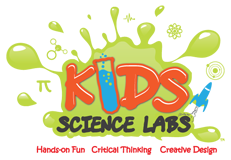1) BUBBLING RAINBOW
This experiment is a chemical reaction [when 2 things, an acid and a base, come together and create something new(gas)]. You can explore the bubbles with your eyes, your ears, your fingers, and even your nose! What does a chemical reaction even sound like? Chemical reactions can even change the temperature. This one is an endothermic reaction (taking energy from the environment) and you and your scientist can touch and feel how much colder it feels!
What you’ll need:
Baking sheet
Food coloring
Baking soda
Vinegar
The Experiment!:
Cover the bottom of the tray with baking soda
Have fun dropping dots of color all over the baking soda
Take a lot of vinegar… start a count down… pour the vinegar all over the tray and watch it bubble!!
Now is your time to OBSERVE! What do you see? What does it sound like? What does it remind you of? What is happening to the colors? What color do all the colors make when they are mixed together? What does the pan feel like? What’s the temperature?
*Kids will probably want to do this over and over and over so have a lot of baking soda and vinegar at hand :)
2) SUPER SOAP
Another fan favorite endothermic chemical reaction! Take ordinary soap and turn it into an overflowing bubbling reaction. (Could be fun to have your scientist “help clean” some messes off plates!)
What you’ll need:
Baking Soda
Vinegar
Dawn Dish Soap (or any dish soap)
The Experiment!:
In a container, pour in vinegar.
Drizzle a healthy couple squeezes of soap into the vinegar (The more soap, the more frothy. ALSO! it’s okay that the vinegar and soap don’t mix. Could generate a side bar conversation about density and how the soap has more density (heavier) than the vinegar so it sinks to the bottom and doesn’t mix. *Could also look up density stack experiments online*).
When you’re ready, add a spoonful of baking soda and tada!
Time to OBSERVE again! What does it look like? Why are there a million bubbles growing? How long do you think the reaction will last? What does it sound like? How could I use this? What does it smell like? Why do you think the reaction stopped? How could we make the reaction bigger?
You could pre dirty some plates with things around the kitchen, and try to use this experiment to “clean” them up!
To extend this experiment, you could have a variety of different powders (baking powder, corn starch, salt, sugar, four, etc)and have your scientist try to figure out which one is a base (like the baking soda) and will set off the experiment!
3) OOBLECK
This experiment explores one of the most amazing exceptions to the Newton’s laws of physics! With just the right ratio of water to corn starch, you and your scientist will discover a slime that acts as both a liquid and a solid, depending on the forces that act on it! This special slime is called a Non-Newtonian fluid. Your scientist will have so much fun learning about solids and liquids while also playing with one of KSL’s favorite slimy substances!
What you’ll need:
Water
Corn starch
A bowl for mixing in and a spoon (or popsicle stick) for mixing
The experiment!:
Grab a bowl and scoop in about a cup of corn starch. Have your scientist explore how this powder feels. Does this powder feel rough like sand? So smooth! Where does this stuff come from?
Using a spoon, slowly add water bit by bit, and mix! Parents, just so you know the ratio is about 2 parts corn starch to 1 part water (2:1), but you can challenge your young scientist to try to find it on their own! (Feel free to do some color mixing and add color (food coloring or water color concentrate will work!)
When you have found the right combination, your slime should be really hard and solid when you tap super quickly on it, but liquid when you try to poke your finger in slowly!
Some of our favorite ways to interact with oobleck is to start off by observing this crazy stuff. What does it look like? Smell like? Sound like? Feel like?
What happens if I knock on it like a door? Or what happens if I sink my hand into it and then quickly pick my hand up? What happens when you blow on it? What happens if you roll it in a ball and then let go? You can even challenge you scientist to pick up the bowl the oobleck is in and hold it upside down over another bowl (SLIME STORM)!!
*This experiment can look very messy, but it super easy to clean with just warm water it should dissolve on countertops and tabletops!
